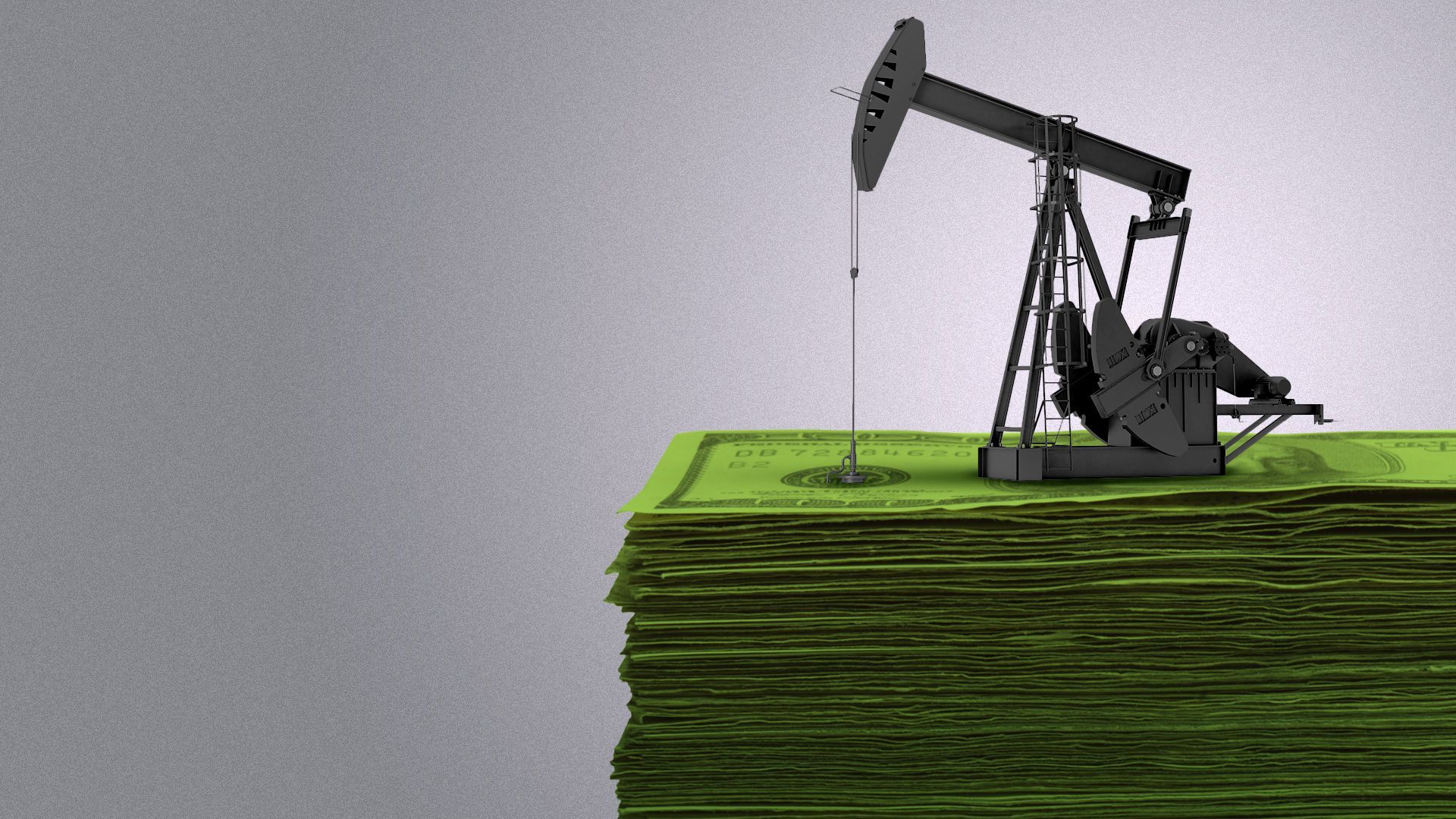| With oil prices soaring and American companies slow-walking production increases, some energy analysts have begun suggesting that politically noxious government incentives — like subsidies for oil companies — could be needed to bring supply back in line with demand, Matt writes. Why it matters: The Russian energy shock, amid broad inflation, leaves political leaders — at least those hoping to stay in power in democracies — with a series of ugly to nightmarish policy options. Driving the news: U.S. crude prices continued to surge Tuesday — to nearly $120 a barrel in early trading before easing back — after the European Union moved a step closer to banning imports of Russian crude. The big picture: Russia is the world's second-largest exporter of crude oil and the largest exporter of natural gas. Sanctions levied in response to its invasion of Ukraine upended energy markets, supercharged prices and triggered a rush to secure supplies. - In theory: The U.S. — the world's largest crude oil producer — has the reserves, wealth, and technical know-how to boost production, offsetting some of the Russia shock's impact on inflation.
- In practice: Unlike other energy superpowers — Saudi Arabia and Russia, for instance — the U.S. relies on a system of laws and market incentives to coax companies to pump more. U.S. leaders can't just pick up the phone and order a couple of million extra barrels of production per day (more below on the production imbalance).
What's next: Some analysts are starting to game out what could be done to boost production and help bring down energy prices in the coming years. - "To do so quickly in an environment in which oil and gas investors are actively discouraging production growth would require a shift to a New Deal-like approach to energy policy," wrote analysts with JPMorgan in a recent report.
- "With an unprecedented investment in U.S. exploration and production along with a significant relaxation in regulations the U.S. Federal Government could potentially encourage U.S. producers to grow crude oil output at a rate of more than 2 million barrels per day, per year starting in 2024," they wrote.
Our thought bubble: Pledging to spend billions of taxpayer money — JPMorgan ballparks the cost of such a New Deal-style response at $400 billion — to subsidize already massively profitable energy companies would be political suicide. - It would also fly in the face of efforts to decarbonize the economy.
- Far likelier options in the U.S. include subsidies to consumers to allow them to keep buying — or penalties like windfall taxes on oil companies for keeping prices high.
The bottom line: With the green energy transition still off in the hazy future and a growing list of giant oil producers like Russia, Iran and Venezuela whose supplies are off-limits, politicians throughout the West need credible plans to address energy costs over the next few years — and fast — if they want to stay in power. | 










No comments:
Post a Comment